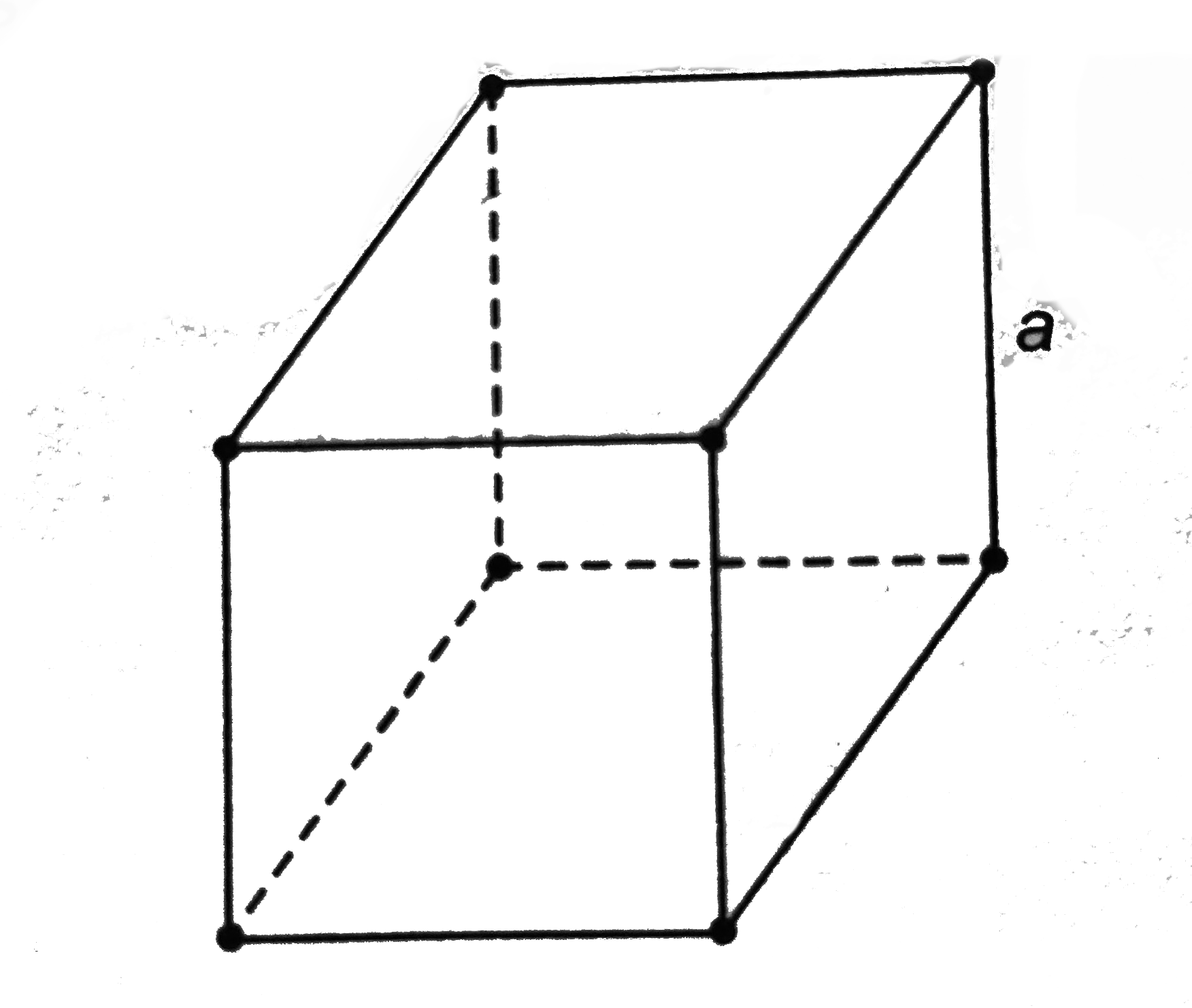An imaginary galaxy is considered to consist of N starts each of mass M and with each pair of stars at a mutual separation of R. If N=4, R≈1021m, M=2×1030kg, find out the gravitational potential energy of galaxy.
To find the gravitational potential energy of the imaginary galaxy consisting of N stars, we can follow these steps:
1. Understanding the Gravitational Potential Energy Formula:
The gravitational potential energy U between two masses m1 and m2 separated by a distance r is given by:
U=−Gm1m2r
where G is the gravitational constant.
2. Extending to Multiple Masses:
For N stars, the total gravitational potential energy can be calculated by considering all pairs of stars. The number of ways to choose 2 stars from N stars is given by (N2)=N(N−1)2.
3. Substituting the Values:
For our case:
- N=4
- Each star has mass M=2×1030kg
- The separation between each pair of stars is R=1021m
The total gravitational potential energy U can then be expressed as:
U=−GM2R⋅N(N−1)2
4. Calculating the Number of Pairs:
For N=4:
N(N−1)2=4×32=6
5. Substituting into the Formula:
Now substituting N, M, and R into the equation:
U=−GM2R⋅6
where G=6.67×10−11N m2/kg2.
6. Calculating M2:
M2=(2×1030)2=4×1060kg2
7. Final Calculation:
Plugging in the values:
U=−6⋅(6.67×10−11)⋅(4×1060)1021
Simplifying this:
U=−6⋅6.67⋅41011×1060=−160.081011×1060=−1.6008×1030J
8. Final Result:
The gravitational potential energy of the galaxy is approximately:
U≈−1.6×1030J
The gravitational potential energy U between two masses m1 and m2 separated by a distance r is given by:
U=−Gm1m2r
where G is the gravitational constant.
For N stars, the total gravitational potential energy can be calculated by considering all pairs of stars. The number of ways to choose 2 stars from N stars is given by (N2)=N(N−1)2.
For our case:
- N=4
- Each star has mass M=2×1030kg
- The separation between each pair of stars is R=1021m
U=−GM2R⋅N(N−1)2
For N=4:
N(N−1)2=4×32=6
Now substituting N, M, and R into the equation:
U=−GM2R⋅6
where G=6.67×10−11N m2/kg2.
M2=(2×1030)2=4×1060kg2
Plugging in the values:
U=−6⋅(6.67×10−11)⋅(4×1060)1021
Simplifying this:
U=−6⋅6.67⋅41011×1060=−160.081011×1060=−1.6008×1030J
The gravitational potential energy of the galaxy is approximately:
U≈−1.6×1030J
Similar Questions
Two spheres each of mass 104 kg are separated by a distance of 100 m. What will be the gravitationel potential energy of the system?
View SolutionEight particles of mass 'm' each are placed at the verties of a cube of side 'a' . Find gravitational potential energy of this system .
 .
.
View SolutionA boy has a mass of 55 kg. He climbs 10 m up a tree. What is his gravitational potential energy?
View SolutionGiven Y=2×1011N/m2,ρ=104kg/m3
Find out elongation in rod.

View SolutionTwo point masses 1 kg and 4 kg are separated by a distance of 10 cm. Find gravitational potential energy of the two point masses.
View SolutionFour particles each of mass m are kept at the four vertices of a square of side 'a' . Find gravitational potential energy of this system.
View SolutionThe radius of the earth is 6.37×106 m and its mean density is 5.5×103kg m−3 and G=6.67×10−11N-m2kg−2 Find the gravitational potential on the surface of the earth.
View Solution_S01_033_Q01.png)
A triple star ststem consists of two stars each of mass m in the same circular orbit about central star with mass M=2×1033kg. The two outer stars always lie at opposite ends of a diameter of their common circular orbit the radius of the circular orbit is r=1011 m and the orbital period each star is 1.6×107s [take π2=10 and G=203×10−11Mn2kg−2]
Q. The mass m of the outer stars is:
View Solution_S01_034_Q01.png)
A triple star ststem consists of two stars each of mass m in the same circular orbit about central star with mass M=2×1033kg. The two outer stars always lie at opposite ends of a diameter of their common circular orbit the radius of the circular orbit is r=1011 m and the orbital period each star is 1.6×107s [take π2=10 and G=203×10−11Mn2kg−2]
Q. The orbital velocity of each star is
View Solution_S01_035_Q01.png)
A triple star ststem consists of two stars each of mass m in the same circular orbit about central star with mass M=2×1033kg. The two outer stars always lie at opposite ends of a diameter of their common circular orbit the radius of the circular orbit is r=1011 m and the orbital period each star is 1.6×107s [take π2=10 and G=203×10−11Mn2kg−2]
Q. The total machanical energy of the system is
View Solution
